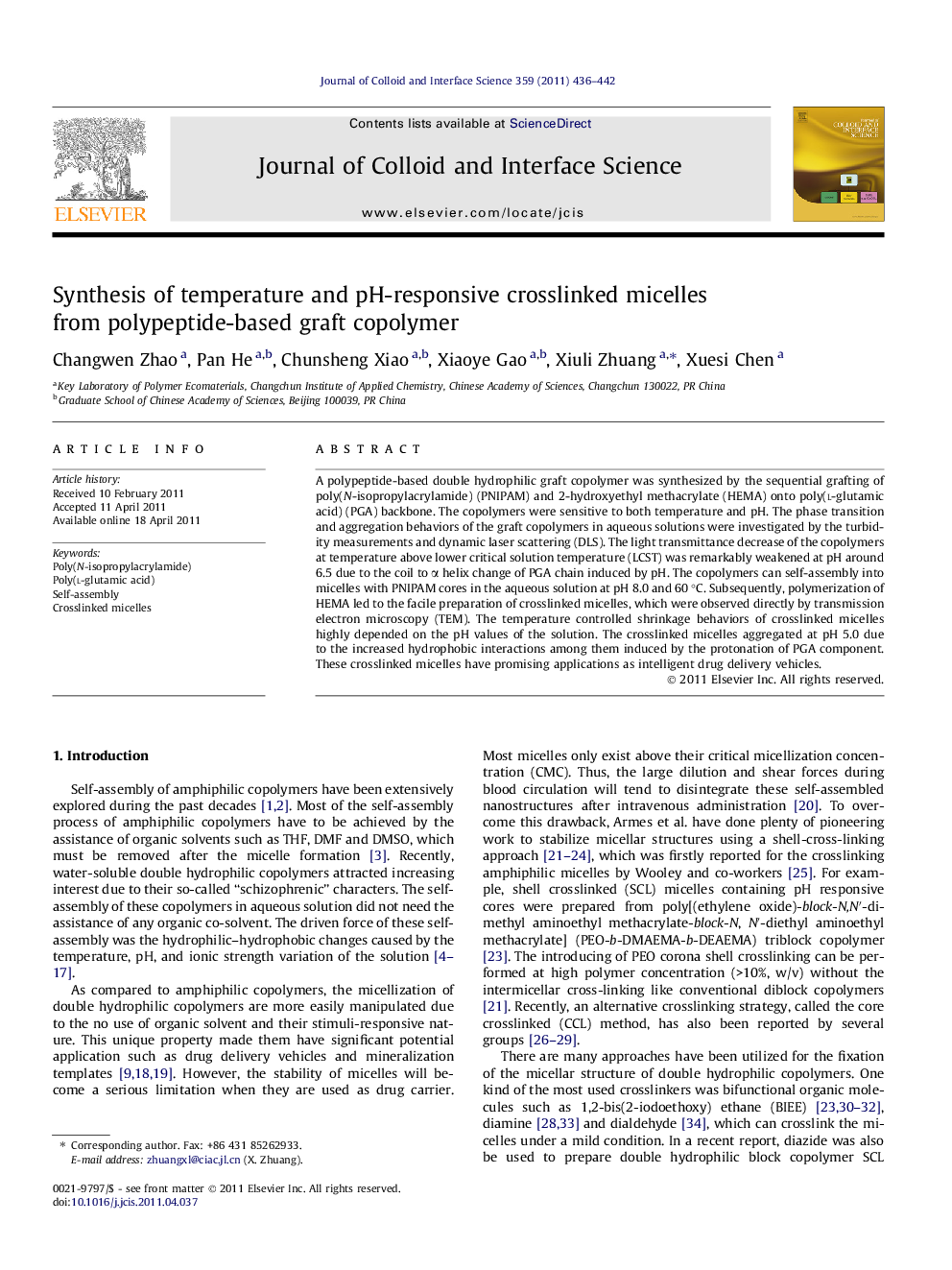| کد مقاله | کد نشریه | سال انتشار | مقاله انگلیسی | نسخه تمام متن |
|---|---|---|---|---|
| 608677 | 880606 | 2011 | 7 صفحه PDF | دانلود رایگان |

A polypeptide-based double hydrophilic graft copolymer was synthesized by the sequential grafting of poly(N-isopropylacrylamide) (PNIPAM) and 2-hydroxyethyl methacrylate (HEMA) onto poly(l-glutamic acid) (PGA) backbone. The copolymers were sensitive to both temperature and pH. The phase transition and aggregation behaviors of the graft copolymers in aqueous solutions were investigated by the turbidity measurements and dynamic laser scattering (DLS). The light transmittance decrease of the copolymers at temperature above lower critical solution temperature (LCST) was remarkably weakened at pH around 6.5 due to the coil to α helix change of PGA chain induced by pH. The copolymers can self-assembly into micelles with PNIPAM cores in the aqueous solution at pH 8.0 and 60 °C. Subsequently, polymerization of HEMA led to the facile preparation of crosslinked micelles, which were observed directly by transmission electron microscopy (TEM). The temperature controlled shrinkage behaviors of crosslinked micelles highly depended on the pH values of the solution. The crosslinked micelles aggregated at pH 5.0 due to the increased hydrophobic interactions among them induced by the protonation of PGA component. These crosslinked micelles have promising applications as intelligent drug delivery vehicles.
Polypeptide-based crosslinked micelle was synthesized from 2-hydroxyethyl methacrylate functionalized poly(l-glutamic acid)-graft-poly(N-isopropylacrylamide) copolymer. The crosslinked micelle exhibits temperature controlled shrinkage behaviors which highly depended on pH values.Figure optionsDownload high-quality image (48 K)Download as PowerPoint slideHighlights
► Graft copolymer composed of poly(N-isopropylacrylamide), polypeptide and 2-hydroxyethyl methacrylate was synthesized.
► The copolymer is pH and temperature-responsive and can self-assembly into micelles.
► The copolymer micelles can be facilely crosslinked through the polymerization of 2-hydroxyethyl methacrylate.
► The introduction of polypeptide endows crosslinked micelle biodegradability.
Journal: Journal of Colloid and Interface Science - Volume 359, Issue 2, 15 July 2011, Pages 436–442